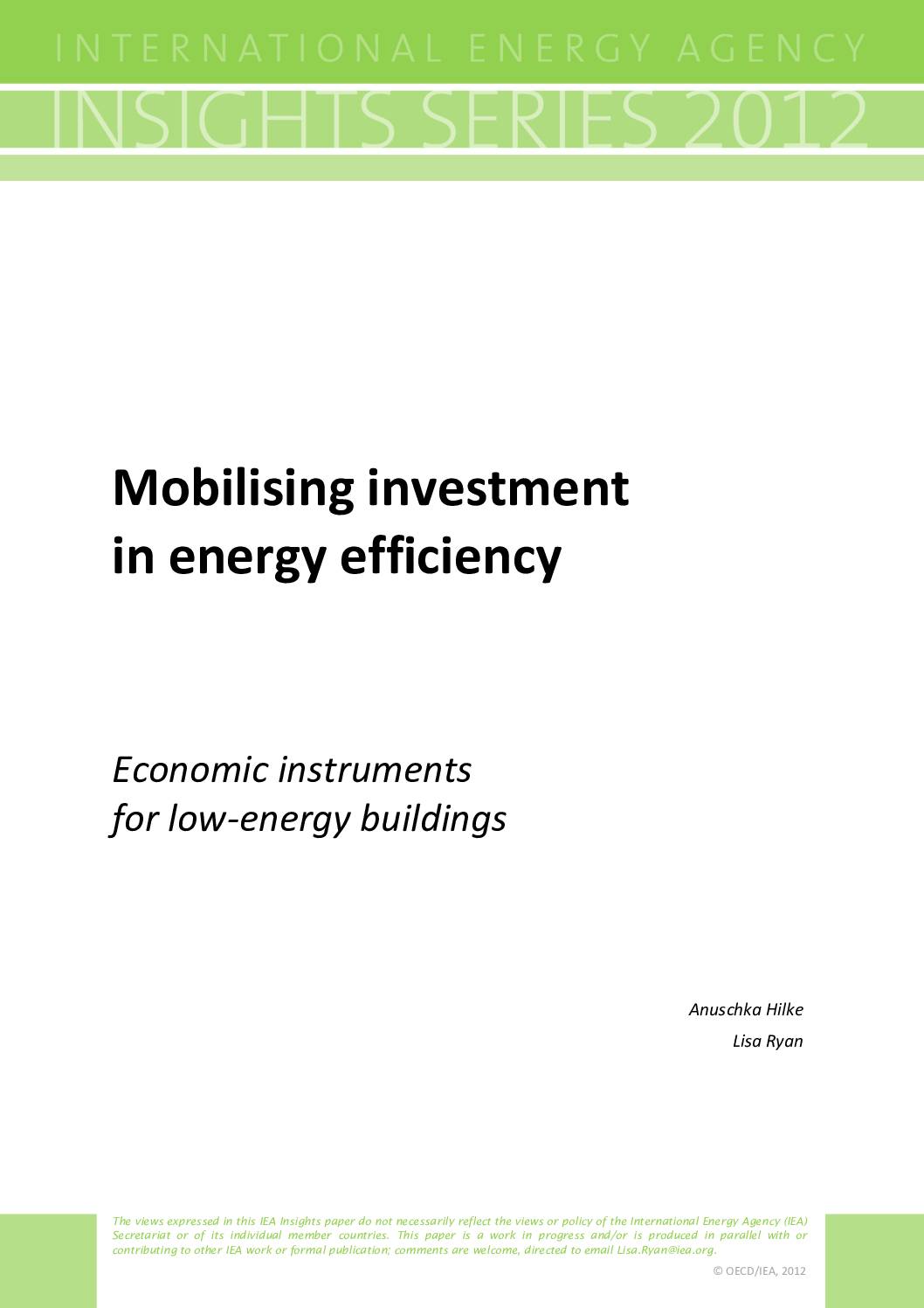This IEA analysis addresses the fact that, to date, relatively little effort has been directed toward evaluating how well economic instruments work. Using the buildings sector to illustrate how such measures can support energy efficiency, this paper can help policy makers better select and design economic instruments appropriate to their policy objectives and national contexts.
This report’s three main aims are to:
Examine how economic instruments are currently used in energy efficiency policy;
Consider how economic instruments can be more effective and efficient in supporting low‐energy buildings; and
Assess how economic instruments should be funded, where public outlay is needed.
The purpose of economic instruments in energy efficiency policy is to provide financial incentives to invest in energy efficiency measures through price and investment signals. The signals may be in the form of incentives (e.g. via subsidies in the form of a grant, a concessional loan or some form of direct public investment) or disincentives (e.g. through price increases via taxes or the creation of a market for energy efficiency certificates). Economic instruments can also be used to increase the amount of finance available or to improve financing terms (e.g. through reduced interest rates, the unlocking of third‐party finance or dedicated credit lines).
Economic instruments can be clustered into four categories, each of which has specific advantages in some contexts:
Fiscal instruments:
taxes
tax reliefs
Financial measures:
loans
grants
Trading schemes:
emissions trading schemes
white certificates
Direct investment:
public procurement
public investment in R&D
investment in public infrastructure.
This report is structured in three parts: (i) a taxonomy of economic instruments used in energy efficiency policy; (ii) the use of economic instruments to achieve low‐energy buildings; and (iii) how these economic instruments are funded when public funds are needed. As a broad introduction, the first section describes and compares the main design features of each economic instrument. The second section investigates how economic instruments are used to improve the energy performance in the buildings sector, providing insights as to which is likely to be effective in different circumstances or to overcome specific barriers to energy efficiency. The final section explores how economic instruments in energy efficiency policy can be funded and/or raise revenue. The first and third sections are cross‐sectoral, and relevant for improving energy efficiency in all sectors. The middle section provides lessons learned from implementing economic instruments specifically to support the finance of low‐energy buildings. Many of the experiences in the buildings sector will surely be useful to policy makers seeking to improve energy efficiency in other sectors.
Link to resource Download sourceShare this

Sectors: Buildings, Cross cutting, Finance, Industry, Renewables
Country / Region: Global
Tags: building types, energy, energy efficiency, incentives, specific financing mechanismsIn 1 user collection: Building Efficiency Accelerator: Finance Resource Collection
Knowledge Object: Publication / Report
Published by: International Energy Agency (IEA)
Publishing year: 2012
Author: Anuschka Hilke & Lisa Ryan
